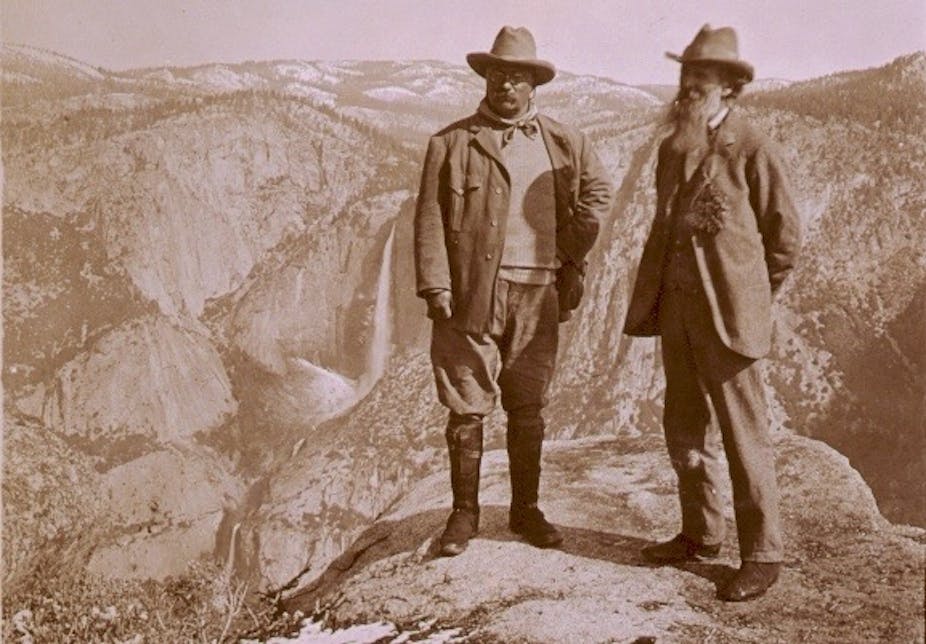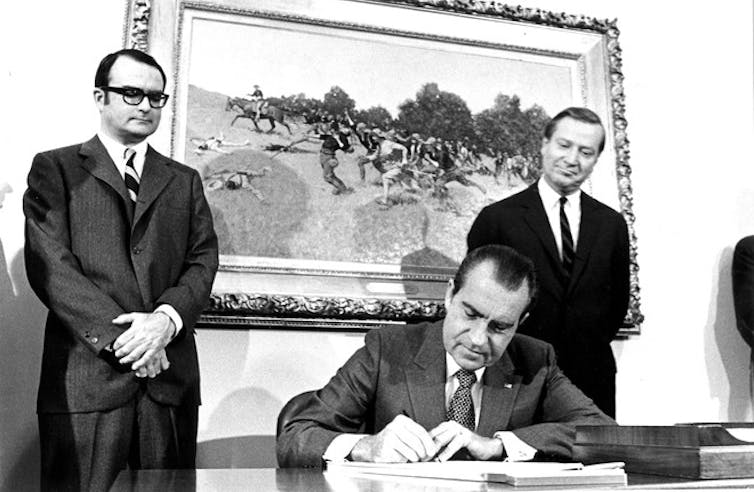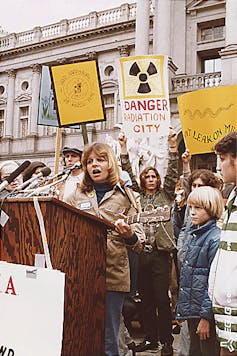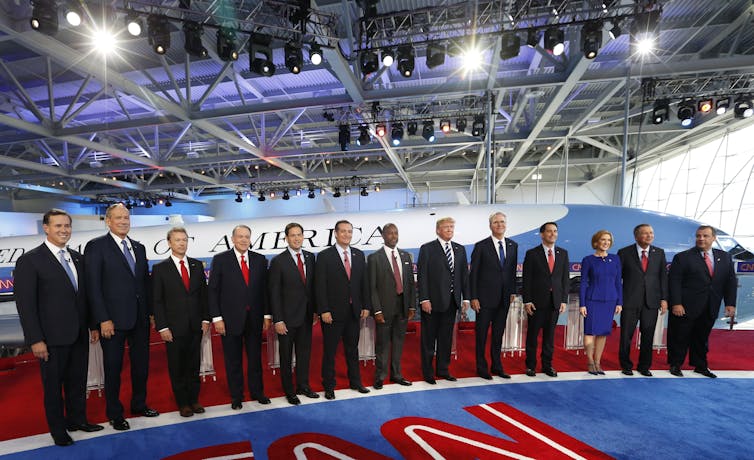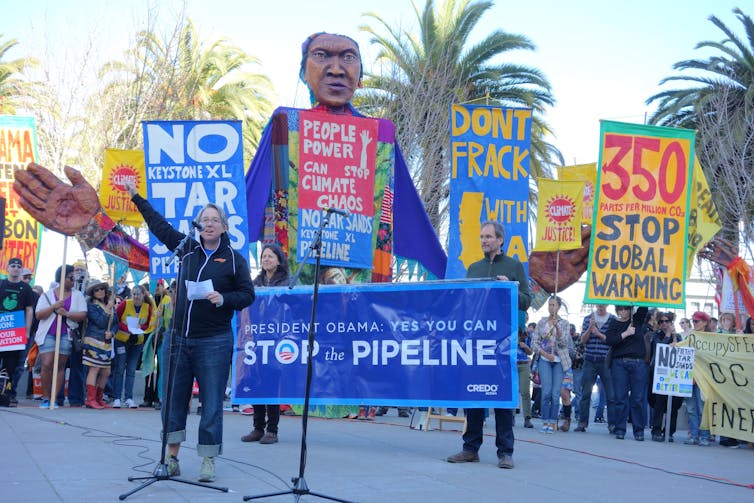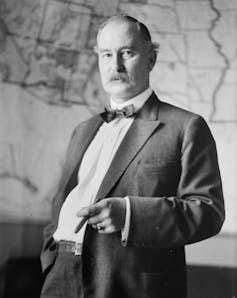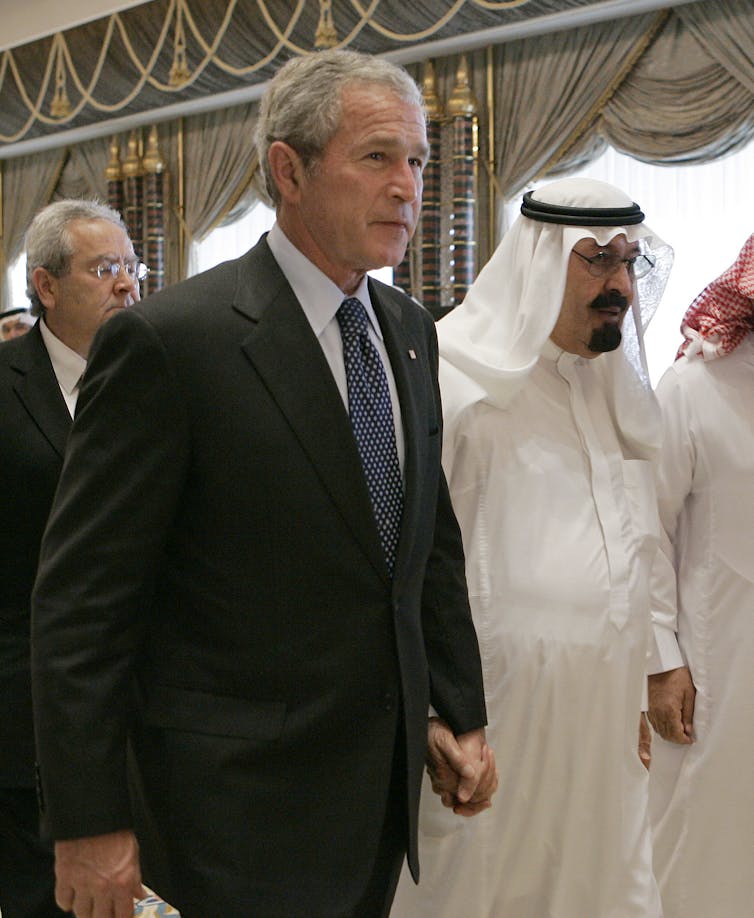Orisha Trinidad: Drums and Colours
Orisha, an African-rooted religion practised in Trinidad and Tobago, has survived for generations despite much misunderstanding. David Tindall learns
It is time for the invisible to reveal themselves. The drums are speaking to the ancient ancestors of Africa. Tonight in a rural garden in central Trinidad, tradition dictates that it will be Shango, the Yoruba god of fire, thunder and lightning who will manifest himself in one of his flock, twisting and twirling in the candle shadows of the shrine. They are oblivious to the stormy accompaniment outdoors as Mother Nature plays fireworks in the midnight sky.
To the outsider this surreal scene seems like a wonderful piece of theatre, sound effects as if made to order, the dancing brilliantly choreographed by people just doing what comes naturally. To the devotee, the ebo, or feast, is much more. It is the most spiritually important ceremony in the Orisha religion; the season of sacrifice and thanksgiving, an almost week-long celebration of food, dance and song from midnight till dawn, during which time there will be many manifestations as the spirits interact in different ways with those possessed.
For anyone not brought up in the faith, the concept of being controlled by some cosmic force is hard to grasp. In fact today, as down the ages, there are those who, in their ignorance, still demonise this religion. Yet there is nothing demonic about Orisha, nothing sinister. It is a non-Christian religion, but as with other belief systems there is the notion of one supreme God — Oludumare.
Orisha spirits, many of them equated with Christian saints, are messengers between humankind and His divine Kingdom. Oya, Shango’s wife, mistress of speed and tempestuous wind, is paired with St Catherine; Oshun, goddess of water and beauty, with St Philomena; Osain, Yoruba god of herbal medicine, healing and prophecy, with St Francis; Shakpana, also a healer particularly of children’s illnesses, with St Jerome; Ogun, the warrior god of iron and steel, with St Michael.
Historically, Orisha worshippers have shown a preference for aspects of the Catholic faith, though the dogma of the Church is virtually ignored. In the early 19th century West African slaves in Trinidad were sometimes baptised into Catholicism en masse; it seems likely that many Orishas used the paraphernalia of the Catholic church as camouflage behind which they hid their African beliefs and practices. Their faith was not to be diminished by oppression. And yet, as we draw towards the end of another millennium the religion is still unrecognised by the census-takers of multi-cultural, multi-religious Trinidad and Tobago. There is still in place an outdated law which forbids the rites and rituals of the religion, though the status of Orisha worship in Trinidad is on the rise and its open appeal to the middle classes is apparently increasing. There is also an Orisha Marriage Bill presently undergoing final revision by the religion’s Council of Elders.
Some people have come to this African-based faith as an act of political and ideological self-expression, a way of reclaiming their identity within the cultural “callaloo” that is Trinidad today. As I see it, the grassroots devotee derives a sense of well-being and self-worth from practising a religion which is essentially community-based and in such close touch with Nature. The saints or gods are there to help the faithful cope with the stresses and strains of life, to protect the water, the soil, food, the roadways. Since there is no written liturgy in the Orisha faith, no sacred book, the continuity and uniformity of the religion depends on oral traditions maintained through the generations.
The structure of each shrine is basically the same, and so are the various objects or symbols inside. In the palais, the open-sided part of the building where the singing, dancing and drumming takes place, there are candles burning in all four corners, into which sweet olive oil or water will be poured from time to time as offerings to the gods, and at one end of the room, in front of the three drummers, there is Ogun’s sword embedded in the earthen floor. Around the blade are candles, bottles of olive oil, water or rum. An adjoining room, the chapelle, houses any statues or lithographs of the saints, crucifixes, candles, pots of water, bottles of olive oil and “tools” associated with the deities: swords, a double-bladed wooden axe, Shango’s principal icon, cutlasses, ceremonial brooms, chac-chacs and the shepherd’s crook. Every chapelle has its collection of thunderstones taken from some sacred place and usually kept in white dishes so they can be fed periodically with olive oil.
In a corner of the garden or compound of the shrine is the perogun, an area where a number of flags on 20-foot bamboo poles have been planted, flying the individual colours of those gods expected to “enter” on any particular night. Worshippers consider flags a conduit through which spirits may visit the shrine. It is here in this corner that the slaying of any sacrificial animals takes place. Candles and stools are also placed at various points in the garden for the convenience of powerful deities, and there is always a water trough or pond, because many spirits are also water gods. Water and blood are reckoned, as well, to be powerful matrices of spirit force. It seems that spirits, like people, demand a lot of attention and respect.
Tonight a red flag flies for Shango. Inside the building the drums are pounding in a call-and-response pattern. The worshippers swaying and chanting are somehow insulated from the thunder and lightning playing havoc beyond their enclave. No-one who experiences the exhausting drama of spirit possession will have any memory of what happened. Nor will they feel any pain should they take a bad fall. Feet that have walked through flame will show no scars. These people will feel only an inner strength, by divine grace, a kind of rebirth.
Shango is expected to manifest himself within one of those dancing inside the palais, but tonight is different and no-one within seems to notice that a middle-aged man who had been talking with friends on a verandah outside the shrine is now flat on his back in the mud and rain, stretched out like a corpse. I was talking to him a few hours ago — a quiet, avuncular man who had travelled to the Ebo every night during the week from his home 20 miles away in Port of Spain. Here he is now, entrenched in the garden, but suddenly starting to move, feet first, in seemingly uncontrollable spasms. The sheer effort of moving forward, inch by inch, towards the candle flame in the doorway of the palais, seems almost too much for him, judging by his facial contortions. It is as though the Earth’s magnetism is reluctant to let him go. He is like a prisoner trying to free himself from invisible shackles.
Now the chanting, dancing throng inside become aware that the manifestation they are awaiting indoors is slowly emerging from the storm. A single candle in the doorway shows the way, and olive oil is poured along the route. As if lifting some enormous weight, he heaves himself out of the quagmire and crashes awkwardly into the door frame, one leg twisted beneath him. The atmosphere is electric, the air filled with incense offered to the four corners of the building (no different from the Catholic high mass). The drums and chanting reach a crescendo; women in white make the way clear for the man being “ridden” by the spirit. Gradually he stands, and moves into the light as though dragging chains.
He is divested of the sharp-edged jewellery around his neck and anything else that might cause injury to himself or anyone else, and his trousers are rolled up to the knee. Finally, as he tries to hold his balance, he is tied around the waist and shoulder with a length of red cloth. Then he staggers through the worshippers and into the chapelle which is said to be his earthly domain. In a matter of minutes he re-emerges, straight as a ramrod now, clutching the shepherd’s crook.
Shango surveys his flock slowly with the care and concern of a father checking that all is well. His eyes, his face, speak volumes as the drums roll.
From the chapelle the head of the shrine, Mother Joan, brings in the candle-lit dish containing sweet olive oil and the sacred thunderstone (this one from Mount St Benedict). She stands before Shango as devotees come in turn to kneel and receive his blessings. It is a powerful scene in which there is obvious respect for the shepherd in their midst guiding their every move.
And Shango himself, it seems, is not without a guardian. His wife, Oya, has now manifested herself in one of the white-robed ladies and is twirling around the floor brandishing an axe, as if to ward off unwanted spirits or visitors. She is a human tempest, one second in the centre of the floor and the next spinning outside into the storm to check the compound for anything amiss. She stops, axe in hand, in front of people standing in the garden. She gestures that she wants them inside the palais; her face carries that simple message. One woman runs off into the night, shrieking.
The blessings, the singing, chanting and drumming go on until a cock crowing signals the thin light of dawn. Only then does the torrential rain stop and worshippers begin to step out into the warm promise of sunshine. Everyone is smiling and you’d think they were just arriving, fresh as paint, for a garden party.
It had been the same all week: a gathering of 60 or 70 people, young and elderly, from far and near, who came to Mother Joan’s ebo around 10 p.m. every evening in a head-tie and dress of a different colour to please the spirits.
During this week of marathons, Wednesday was yellow for the god Osain, he who protects the forest, who can help people in distress, who can find jobs for them, and food. He has another attribute I would like to have known about sooner, as a long-time sufferer with back pain: Osain is also said to be a very good chiropractor.
Shango’s night had so appropriately coincided with thunder and lightning; Osain’s evening is dry — and yet wet with moonlight, palms pointing silver fingers into the shrine. Typically the celebration begins with Christian prayers, the drums rolling quietly behind the Hail Marys. Then all sound ceases briefly, and when the drums start again they are speaking a different language, and so are the worshippers. Instantly we are in West Africa, and the song leader guides us through the musical offerings to different gods. There will be invitation songs, all sung in Yoruba, asking the orishas, or saints, to visit the shrine and possess one of the devotees. There will be acceptance songs as an expression of gratitude after manifestations, and work songs sung while a spirit is attending to or consulting with someone. There are also pleasure songs to entertain the gods after they have completed their work.
Usually the song leader sings for the saints in a particular order but since there is no written liturgy the order may differ from shrine to shrine. Generally the sequence starts with songs for Eshu, the gateman, opening the way to the spiritual experience, then Ogun, the protector, followed by Osain, Shakpana, Emanje (St Anne), Oshun and Erele (equated with Jonah, not as a saint, but as more of a prophet, which I suppose is reasonable, given his adventures at sea). Osain who is said to take special care of children is very popular at Mother Joan’s shrine. She’s had 10 of her own, six of them still at home, and there are grandchildren. Tonight, the palais is jumping with manifestations, at one point half a dozen at a time. There is an explosion of drums and colour.
Several men, at the height of spirit possession, walk on burning coals without a hint of pain. Osain, I’m told, sometimes feels uncomfortable unless there is fire and the sight of men treading the glowing embers is proof, apparently, that he is there. One of Mother Joan’s daughters glides gracefully towards the drummers with a live morocoy perfectly balanced upon her head, the top of its shell lit by four candles. The morocoy is one of the favoured offerings to Osain. So is the white goat which is also brought into the throng to be washed and anointed with oil. There it stands, chewing, blissfully unconcerned. Finally it is led to all four candle-lit corners along with other live offerings — a pair of ducks, a pair of hens, a pair of chickens. A man picks up the goat and dances with it draped around his neck Then, amid the song and dance of celebration, and a puff of incense, a pair of hands holds aloft a baby, only one month old, while prayers are sung for Osain to bestow his blessings upon the child.
And so the night’s spiritual activity moves on relentlessly towards its finale in the moonlit garden, the drummers having re-assembled beneath the flags to welcome those bringing their animals to the sacrificial altar. Prayers are chanted and the first in line, the white goat, no longer chewing, finds himself being danced around again — this time on Mother Joan’s shoulders. A final fling. Then, it is quickly over. The cutlass falls.
Osain was well served this night. In the days to come, all the food, when prepared, will be given to the needy in the district, and beneath the flags in Mother Joan’s shrine will lie some evidence to commemorate her Ebo. In this case it will be the morocoy.
There will be many such ebos in the months of the feast season, and some worshippers, along with drummers, will travel around from one to another. I should mention that not all the shrines sacrifice animals. Some prefer to offer fruit instead, either on moral or financial grounds, or perhaps a combination of both.
According to the most recent count there are now 70 Orisha shrines in Trinidad. But invitations to visit any one of them do not come easily, and that is understandable. The Orisha religion is often misinterpreted even among those who profess religious tolerance, and devotees are cautious about outsiders. In fact until fairly recently in the minds of many Trinidadians the name Shango, and the wild images that it might conjure, had come to epitomise Orisha worship. Way back in history the label stuck because Shango was King of the Oyo people (hence his wife’s name Oya) who were prominent among the enslaved Yoruba. In African theology, Shango is one of the gods who originally walked the earth.
It is interesting that Mother Joan’s shrine is in the middle of a Hindu community who fly different flags for different spirits in their gardens. Some of the Hindus happily come to Orisha ceremonies and vice versa: religious tolerance in practice. History is important to all religious communities, including the Orishas, which might explain the tendency these days towards Africanisation. After all, it is said that a people without a history is like a tree without roots.
Maybe one day the census-takers will visit an Ebo, and amid the drums and colours of an African rainbow, what is officially invisible will be revealed.
David Tindall is a former BBC correspondent who was their man in West Africa during Nigeria’s Biafra War
© MEP Publishers | Orisha Trinidad: Drums and Colours | Caribbean Beat Magazine https://www.caribbean-beat.com/issue-34/drums-and-colours#ixzz6MT5VYE7g
